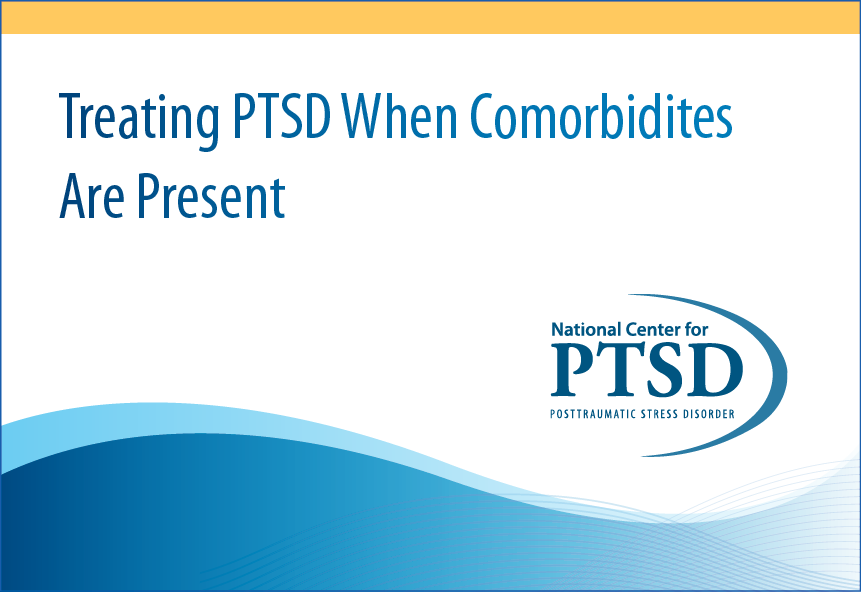PTSD: National Center for PTSD
Treating PTSD When Common Comorbidities Are Present
Continuing Education
This section brings together free in-depth Continuing Education resources for the Professional community concerned with trauma.
Treating PTSD When Common Comorbidities Are Present
- Date Created: 07/15/2022
- Time to Complete: 1 hour
- Credits: ANCC, APA, ASWB, ACCME, NBCC, Other Orgs
- Skill Level: Intermediate
- Course Series: PTSD 101, PTSD Consultation Lecture Series
 Author(s):
Author(s):
Description
Most individuals with PTSD have additional mental health diagnoses which may impact treatment planning. A common question is whether PTSD and co-occurring conditions should be treated concurrently or sequentially. In addition, the presence of comorbidities may raise questions as to how well complex clients can handle evidence-based treatment for PTSD in which trauma processing is required, such as Prolonged Exposure or Cognitive Processing Therapy.
This course reviews the research evidence and recommendations from clinical practice guidelines regarding best treatment practices for PTSD when comorbidities are present. Both psychotherapy and pharmacological treatments are discussed as well as assessment strategies and potential complications that may accompany comorbidities. The authors focus on some of the most common co-occurring conditions, specifically substance use disorders, depression, anxiety, traumatic brain injury, insomnia and chronic pain.
Goals and Objectives
- Describe VA/DoD Clinical Practice Guideline recommendations for treating PTSD when comorbidities are present
- Identify psychiatric disorders that are often comorbid with PTSD
- Identify PTSD assessment strategies appropriate for different health care settings
- Describe VA/DoD Clinical Practice Guideline recommendations for treating PTSD when comorbidities are present
- Identify psychiatric disorders that are often comorbid with PTSD
- Identify PTSD assessment strategies appropriate for different health care settings


























